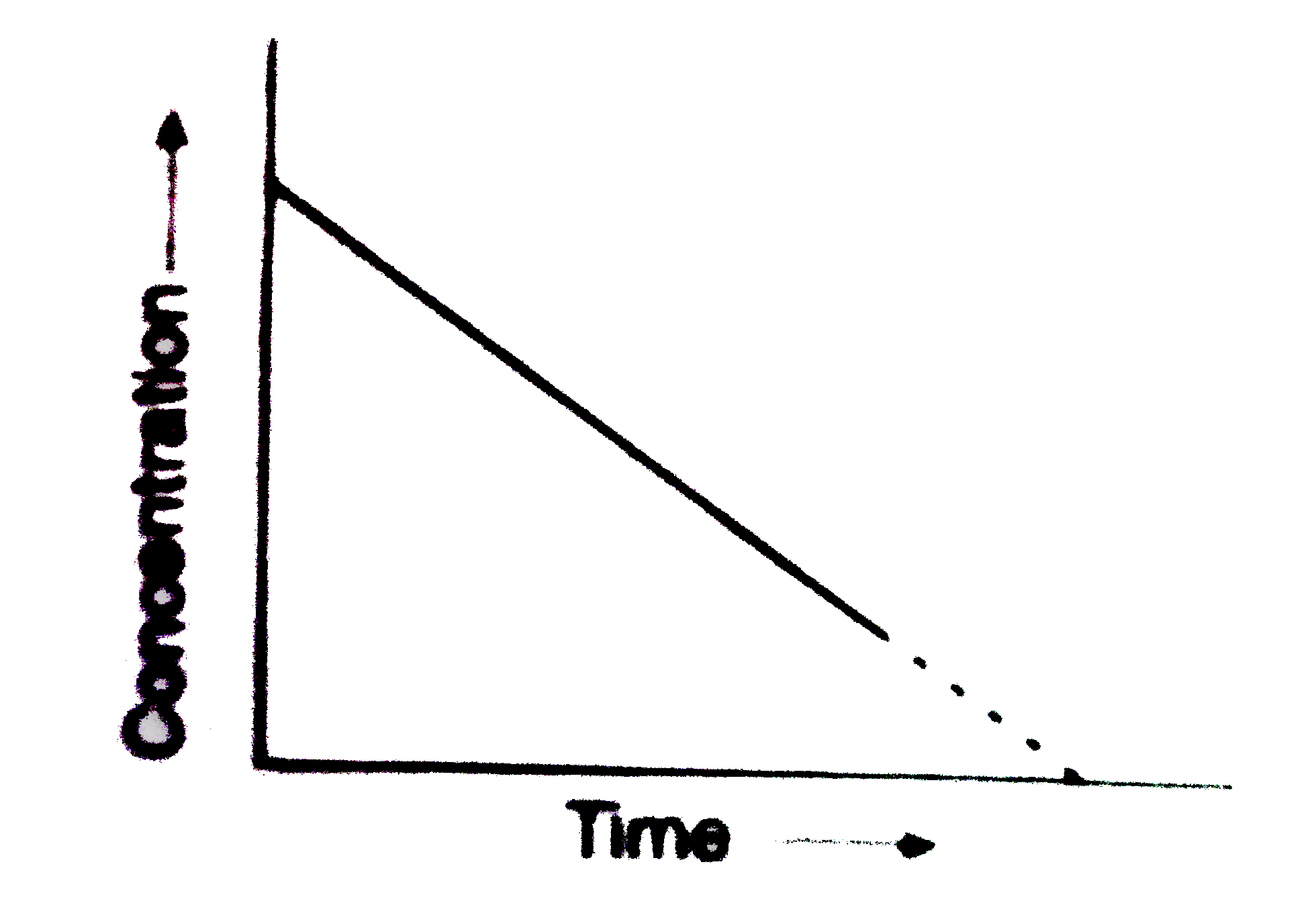For a zero order reaction, the plot of concentration versus time is linear with
Positive slope with zero intercept
positive slope with non-zero intercept
negative slope with non-zero intercept
parallel to time axis
The correct Answer is:C
To solve the question about the characteristics of a zero-order reaction, we will follow these steps:
Step 1: Understand Zero-Order Reactions
A zero-order reaction is defined as a reaction where the rate of reaction is constant and does not depend on the concentration of the reactants. This means that the rate of formation of products is constant over time.
Hint: Remember that in a zero-order reaction, the rate is independent of the concentration of the reactants.
Step 2: Write the Rate Law for a Zero-Order Reaction
The rate law for a zero-order reaction can be expressed as:
Rate=−d(A)dt=k
where k is the rate constant.
Hint: The rate constant k is a key feature of zero-order reactions and remains constant.
Step 3: Integrate the Rate Law
To find the relationship between concentration and time, we can rearrange the rate law:
−d(A)=kdt
Integrating both sides from the initial concentration (A0) at time t=0 to the concentration (A) at time t:
∫(A)(A0)d(A)=−k∫t0dt
This gives us:
(A)−(A0)=−kt
Rearranging this, we find:
(A)=(A0)−kt
Hint: The integration shows how the concentration decreases linearly over time.
Step 4: Identify the Linear Relationship
The equation (A)=(A0)−kt can be compared to the equation of a straight line y=mx+c, where:
- y is the concentration (A)
- m is the slope, which is −k
- x is time t
- c is the y-intercept, which is the initial concentration (A0)
Hint: Recognize that the slope of the line is negative, indicating a decrease in concentration over time.
Step 5: Conclusion
From the analysis, we conclude that for a zero-order reaction, the plot of concentration versus time is linear with a negative slope equal to −k and a y-intercept equal to the initial concentration (A0).
Final Answer: The plot of concentration versus time for a zero-order reaction is linear with a negative slope.
A zero-order reaction is defined as a reaction where the rate of reaction is constant and does not depend on the concentration of the reactants. This means that the rate of formation of products is constant over time.
The rate law for a zero-order reaction can be expressed as:
Rate=−d(A)dt=k
where k is the rate constant.
To find the relationship between concentration and time, we can rearrange the rate law:
−d(A)=kdt
Integrating both sides from the initial concentration (A0) at time t=0 to the concentration (A) at time t:
∫(A)(A0)d(A)=−k∫t0dt
(A)−(A0)=−kt
Rearranging this, we find:
(A)=(A0)−kt
The equation (A)=(A0)−kt can be compared to the equation of a straight line y=mx+c, where:
- y is the concentration (A)
- m is the slope, which is −k
- x is time t
- c is the y-intercept, which is the initial concentration (A0)
From the analysis, we conclude that for a zero-order reaction, the plot of concentration versus time is linear with a negative slope equal to −k and a y-intercept equal to the initial concentration (A0).
Topper's Solved these Questions
Similar Questions
Knowledge Check
For a zero order reaction the plot of concentration of reactant versus time is : (intercept refers to concentration axis )
 Alinear with +ve slop and zero interceptBlinear with -ve slop and zero interceptClinear with +ve slop and non-zero interceptDcurve asymptotic to concentration axis
Alinear with +ve slop and zero interceptBlinear with -ve slop and zero interceptClinear with +ve slop and non-zero interceptDcurve asymptotic to concentration axisFor a zero order reaction, the plot of concentration of a reactant vs time is (intercept refers to concentration axis)
ALinear with +ve slope and zero interceptBLinear with -ve slope and zero interceptCLinear with -ve slope and non-zero interceptDLinear with +ve slope and non-zero interceptFor a zero order reaction, the plot of concentration of a reactant vs time is (intercept refers to concentration axis)
Alinear with positive slope and zero interceptBlinear with negative slope and zero interceptClinear with negative and non-zero interceptDlinear with positive and non-zero intercept
For a zero order reaction, the slope in the plot of [R] vs. time is
View SolutionFor a zero order reaction '[R]0 is the initial concentration
View SolutionThe graph plotted between concentration versus time

View SolutionFor a first order reaction, the plot of log[A]tvs t is linear with a
View SolutionFor a zero-order reaction, with the initial reactant concentration a, the time for completion of the reaction is
View Solution
